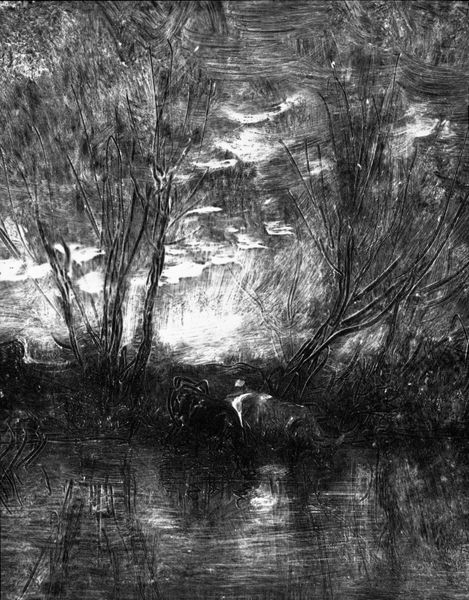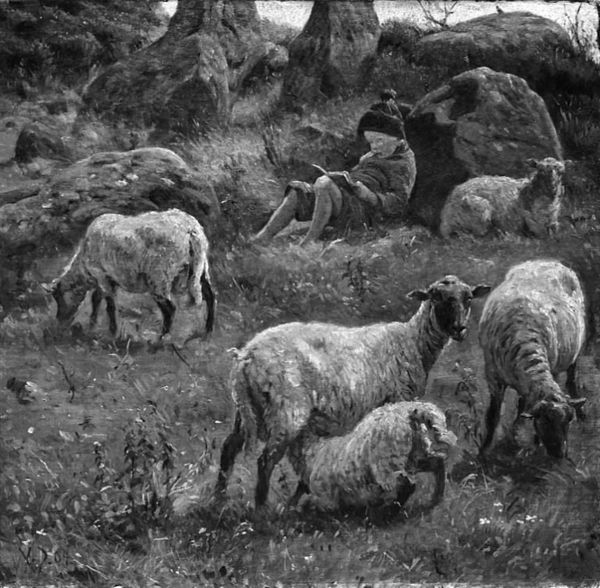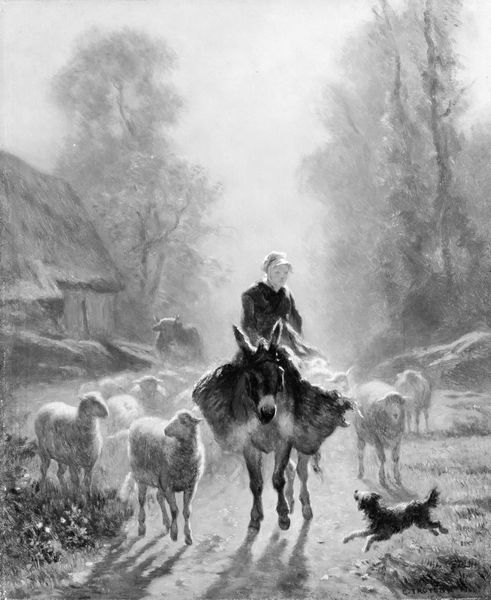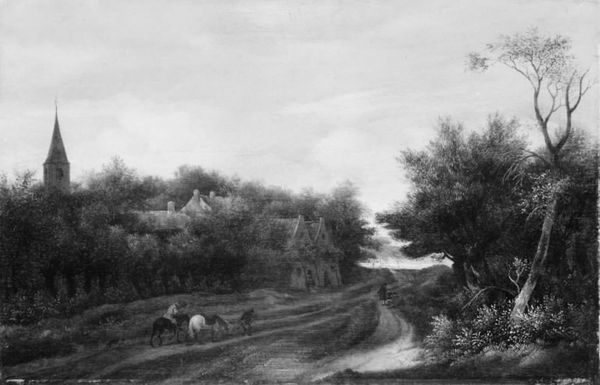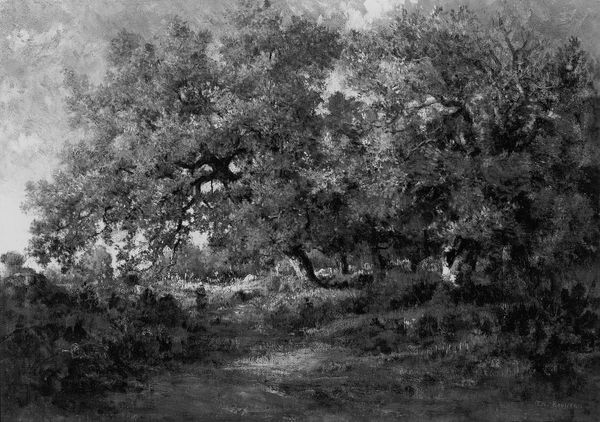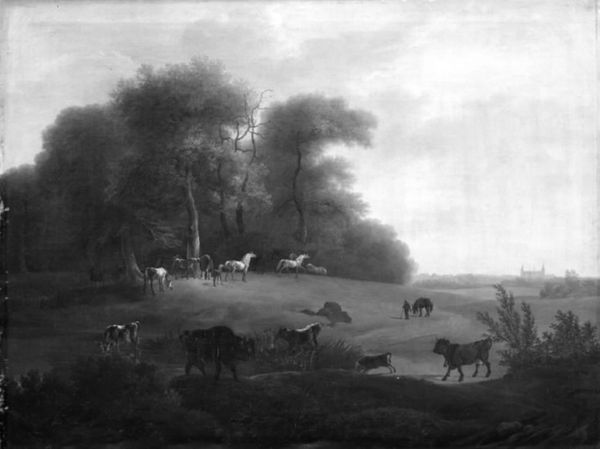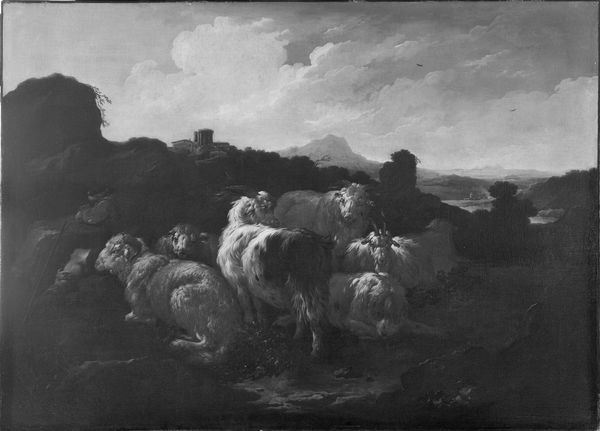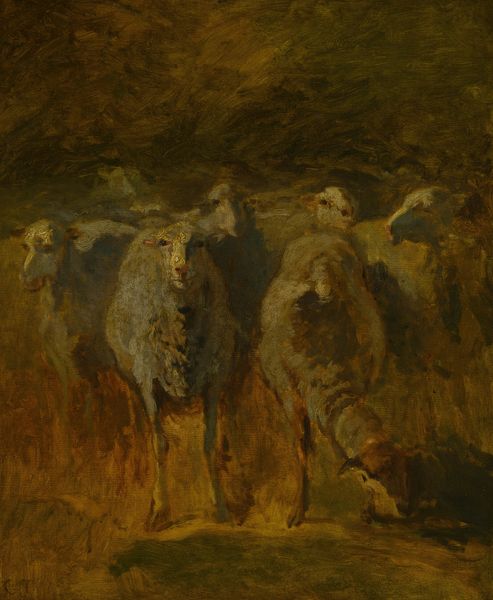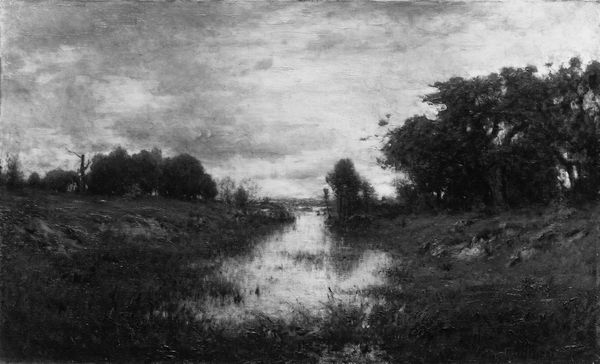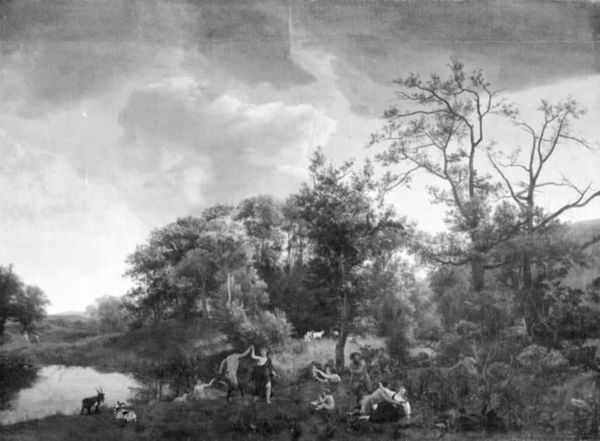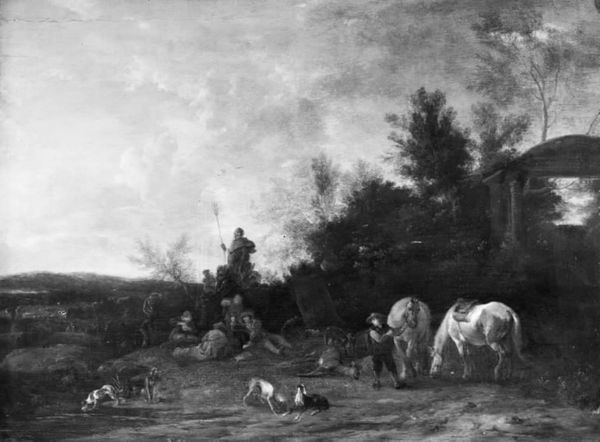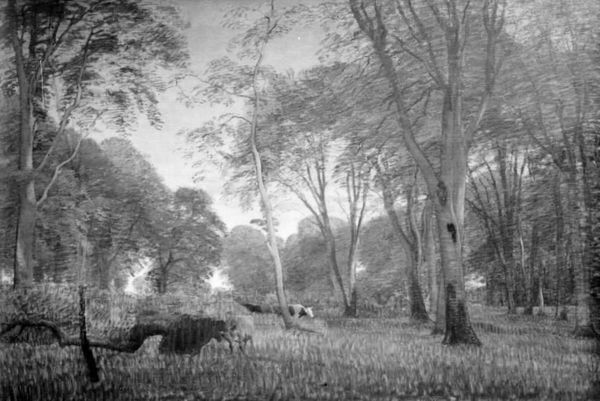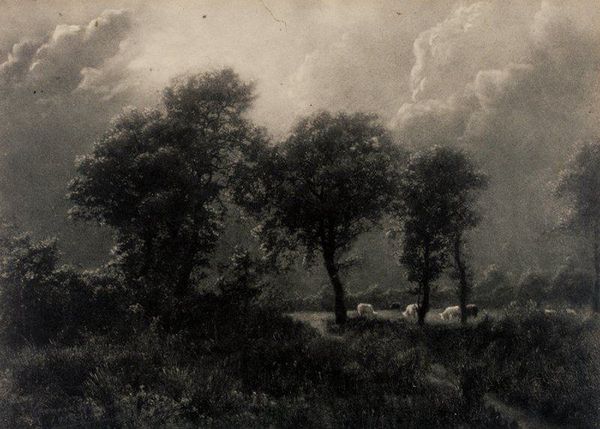
painting
#
painting
#
impressionism
#
landscape
#
monochrome photography
#
genre-painting
#
monochrome
#
realism
#
monochrome
Dimensions: 25 7/8 x 17 7/8 in. (65.7 x 45.4 cm)
Copyright: Public Domain
Editor: Here we have Anton Mauve's painting, "Twilight," likely created somewhere between 1858 and 1888. It looks like it was done with oil paints and the mood seems very subdued, almost melancholy. It's striking how he captured the light. What do you see in this piece, particularly in its symbolic language? Curator: It certainly is evocative, isn't it? Mauve uses the setting sun – that twilight you mentioned – as a potent symbol. The darkening landscape mirrors a fading day, but also perhaps a fading way of life. Consider the sheep; they are herded together, guided, and dependent. Could they represent the flock mentality of society at the time, a collective identity rooted in agrarian tradition? Editor: That's a really interesting point about the "fading way of life." It makes me think about industrialization happening then. Curator: Precisely. And isn’t it compelling how the shepherd, almost obscured by the trees, yet still central? Perhaps representing a kind of paternalistic, guiding force – authority almost hidden within nature, but still ever-present? Does the painting evoke any personal connections for you? Editor: It reminds me a bit of childhood memories of visiting my grandparents’ farm, and the cycle of life there. Simple, grounded. It's all muted tones too, which adds to the reflective feeling. Curator: Yes, the almost monochromatic palette lends a sense of timelessness and nostalgia, blurring the line between observation and memory. A universal yearning, maybe, for a connection to the land and to simpler times that probably never actually existed. We see similar sentiments echoed even now. Editor: So, it's more than just a pretty landscape. There's cultural commentary woven in. I will definitely never look at pastoral paintings the same way again. Curator: Indeed! It shows how a seemingly simple scene can hold a multitude of meanings, reflecting the values, anxieties, and collective memories of a time. Art is often the quietest but most insightful dialogue we have with ourselves.
Comments
No comments
Be the first to comment and join the conversation on the ultimate creative platform.
